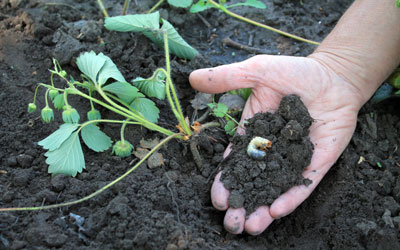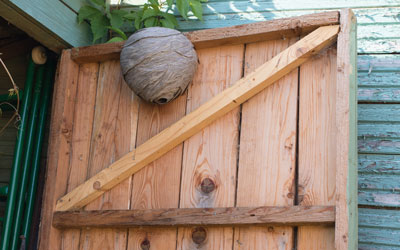 Keeping a lawn alive and healthy is hard enough. When you have a lawn pest problem, it can be even harder. Unfortunately, summertime in Utah is a haven for lawn pests, many of which hatch in the late summer and remain active through the fall months. Lawn insects can threaten the health of your roots, damaging existing turf and preventing new growth. A single insect can make a big impact, making it important to learn how to prevent summer lawn pests. The lawn experts at Rentokil are here to share their top tips for keeping lawn pests away for good.
Keeping a lawn alive and healthy is hard enough. When you have a lawn pest problem, it can be even harder. Unfortunately, summertime in Utah is a haven for lawn pests, many of which hatch in the late summer and remain active through the fall months. Lawn insects can threaten the health of your roots, damaging existing turf and preventing new growth. A single insect can make a big impact, making it important to learn how to prevent summer lawn pests. The lawn experts at Rentokil are here to share their top tips for keeping lawn pests away for good.
Most Common Summer Lawn Pests
There are several pests that cause the biggest headaches for residents every summer. These include:
- Chinch bugs. These pesky insects cause iregula patches of brown in turf when they suck juice from your grass. They love the heat and attack areas in full-sun
- Caterpillars. Certain species feed on the actual blades of grass and can quickly eat away at large patched of grass entirely.
- Grubs. These immature beetles live under the soil and feed on grass roots. They typically hatch in the late summer.
- Fleas & ticks. Although these don’t damage your lawn, they will happily reside in areas in your yard during the summer, endangering your family and pets.
What Can You Do to Prevent Them?
Some of the signs that you have lawn pest damage is brown spots or dying patches. Even wilted blades and bite marks could be signs of a bigger lawn insect problem. To prevent full-blown infestations, it’s important to keep a close watch on your lawn during the summer. Damage can be done before you really notice it, making it essential to keep an eye out. As soon as you notice possible lawn pest activity, it’s best to contact a professional lawn care company. Trying to get rid of them on your own with pesticides can further damage your lawn.
Year-Round Lawn Insect Prevention
The team at Rentokil has a unique understanding of the summer lawn pests in our area. Because these insects can pose such a big threat to the health and longevity of your turf, it’s important to enlist our help to control any infestations as well as keep future pests away. Contact our lawn care experts today to learn more about how we can help prevent summer lawn pests.

 Wasps are one of the most common summertime pests, especially here in the Northern Utah and Southern Idaho area. Normally a beneficial part of the environment, wasps can create a hazardous environment when they build their nests in residential areas. There are a few different types of wasps in our areas, and they all build different kinds of nests. Although it’s important to never approach a nest, it’s also important to learn how to identify them. The team at Rentokil is here to help you learn how to identify wasp nests.
Wasps are one of the most common summertime pests, especially here in the Northern Utah and Southern Idaho area. Normally a beneficial part of the environment, wasps can create a hazardous environment when they build their nests in residential areas. There are a few different types of wasps in our areas, and they all build different kinds of nests. Although it’s important to never approach a nest, it’s also important to learn how to identify them. The team at Rentokil is here to help you learn how to identify wasp nests.